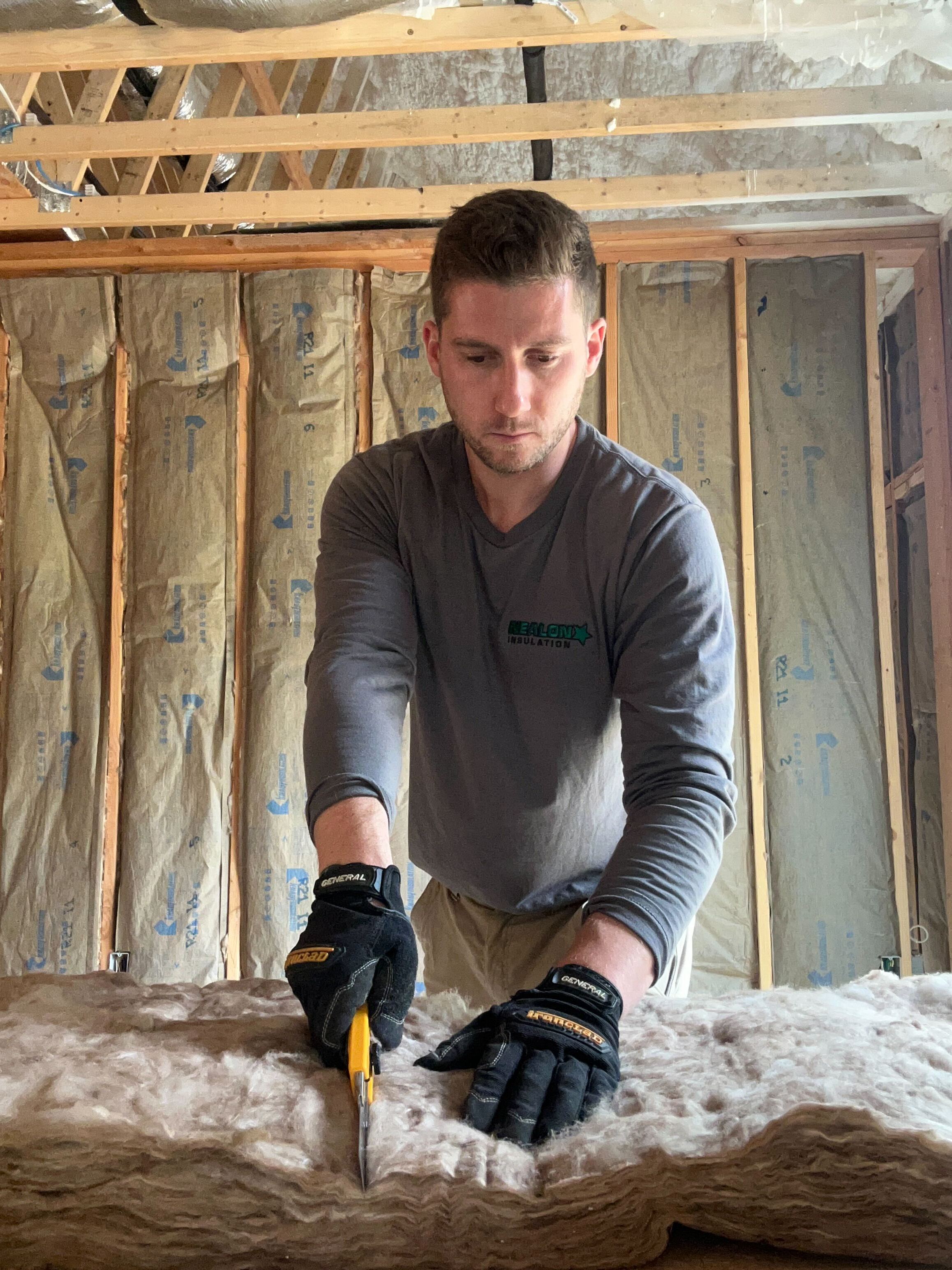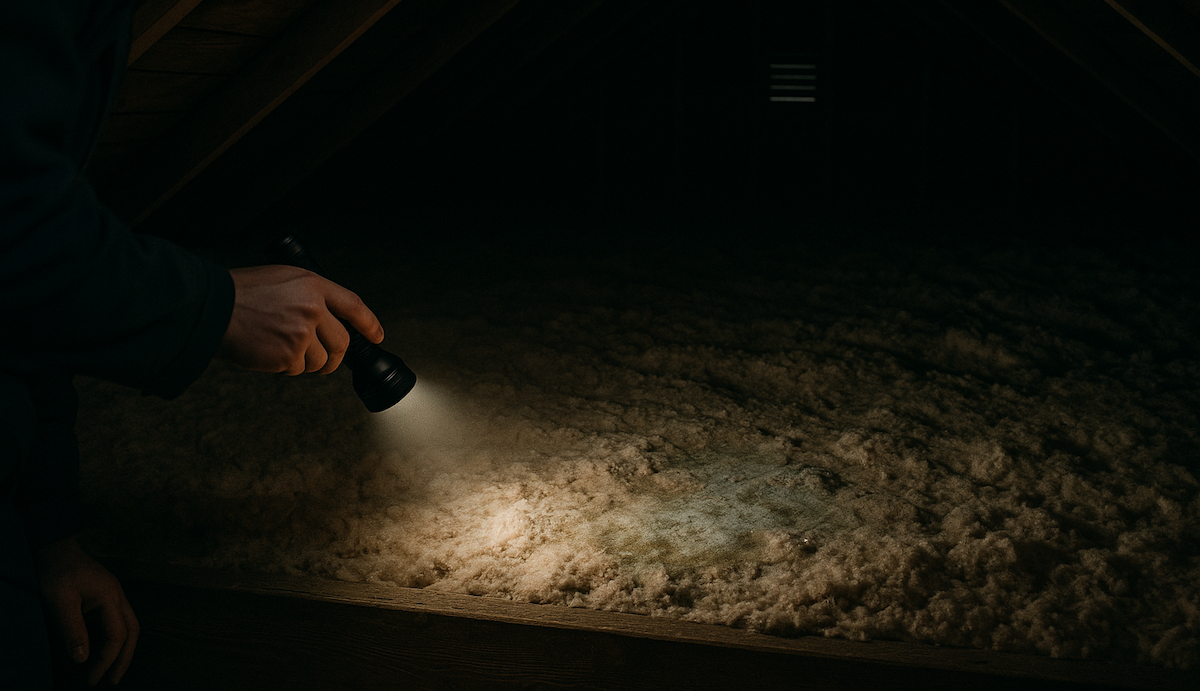How Much Insulation Do I Need in Connecticut? (R-Values Explained)

Let’s cut to the chase: if your house is drafty in the winter and sticky in the summer, it probably doesn’t have enough insulation—or the right kind. A lot of folks think insulation is just fluff in the attic. It’s not. It’s your home’s armor against brutal New England winters, swampy summers, and soul-crushing energy bills.
The key to getting insulation right in Connecticut? Understanding R-value.
Let’s break it down like a contractor who actually works on houses (not just writes blogs about them).
What Is R-Value and Why Should You Care?
R-value measures how well insulation resists heat flow. The higher the number, the better the material is at slowing down the escape of warm air in winter—or blocking the summer heat from creeping in.
Think of R-value like SPF, but for your house. The higher it is, the more protection you’re getting. And in Connecticut, where February feels like a freezer and July hits like a sauna, that protection isn’t optional—it’s essential.
Skimping on R-value is like leaving your front door cracked open with the heat running. Your HVAC system works overtime, your energy bills climb, and your comfort? Out the window.
Want to know if your home’s insulation is actually doing its job? We built a quick R-Value Calculator that takes the guesswork out.
How to Know If Your Home Is Under-Insulated
Most Connecticut homes—especially anything built before 1990—are running on insulation that’s either too thin, poorly installed, or downright expired. So how do you know if your house is one of them?
Here’s what to look for:
Drafty Rooms or Cold Floors
Feel that chill around your feet in the morning? That’s not just “old house charm.” It’s heat slipping out through your floors, walls, or attic. If you find yourself hovering near space heaters or wearing socks year-round, your insulation probably isn’t cutting it.
Uneven Temperatures Between Rooms
If the guest bedroom is an icebox while the kitchen feels like a sauna, your home’s thermal envelope is broken. That usually means your insulation is patchy or missing in key areas—especially attics, knee walls, and crawl spaces.
Higher-Than-Expected Energy Bills
Heating and cooling should feel expensive, but not that expensive. If your bills are creeping up every year with no real changes to your usage, poor insulation might be why. Your HVAC is running longer just to keep up with the heat loss.
Ice Dams on the Roof
This is the big one. If your roof forms icicles or ice dams after a snowstorm, your attic is leaking heat. That melted snow refreezes at the edges, causing backups, roof damage, and in some cases—interior leaks. This is a dead giveaway that your attic insulation (and ventilation) needs help.
Cold Interior Walls in Winter
Touch your interior walls. If they feel cold to the touch, that means they’re not doing a great job of keeping warm air in—or cold air out.
How Much Insulation Do Connecticut Homes Need?
Connecticut sits in Climate Zone 5 (translation: cold enough that you need solid insulation, but not quite Alaska).
Here’s what the pros—and the U.S. Department of Energy—recommend:
If your current insulation doesn’t hit these numbers, you’re probably heating the great outdoors.
Coastal vs. Inland: Region-Specific Insulation Tips for Connecticut Homes
Connecticut may be a small state, but when it comes to insulation, where you live makes a big difference. A shoreline bungalow in Old Saybrook faces a whole different set of challenges than a ranch in Glastonbury or a colonial in Avon. And after nearly 50 years of crawling through homes all over the state, we’ve seen the patterns up close.
If You’re Near the Coast (Old Lyme, Clinton, Westbrook, etc.)
Your main enemies: Humidity, salt air, older framing, and wind-driven moisture.
- Why it matters: Many shoreline homes were built before modern energy codes—and often with minimal wall insulation, no air barrier, and plenty of air gaps. Add in coastal storms and damp summers, and you’ve got a recipe for mold, rot, and rising energy bills.
- Insulation tips:
- Use materials that resist moisture—like dense-pack cellulose, rigid foam, or closed-cell spray foam.
- Make sure you air seal before insulating. Gaps let that humid air sneak into the walls and attic.
- Don’t forget the crawl space. Most shoreline homes sit on piers or shallow foundations that suck in damp air like a sponge.
If You’re Inland (Middletown, Tolland, Cheshire, etc.)
Your main enemies: Cold winters, aging batt insulation, and inconsistent air sealing.
- Why it matters: Homes built in the '80s and '90s inland often look well-insulated—but what’s in those walls is typically fiberglass batts that have settled, sagged, or were never properly fitted in the first place.
- Insulation tips:
- Revisit the attic first—many homes only have R-30 when they need R-49 or more.
- Dense-pack the walls if you’ve got drafty rooms or uneven temps.
- If your basement walls are exposed or uninsulated, add rigid foam or spray foam to cut heat loss and dampness.
Insulation Types and Their R-Values (Per Inch)
Not all insulation is created equal—and neither is its R-value per inch. Some materials give you more thermal resistance with less thickness. Others are more budget-friendly, easier to install, or better at filling gaps. The best choice depends on where you’re insulating, your goals, and your budget.
Let’s break it down:
What “R-Value Per Inch” Actually Means
It’s exactly what it sounds like: how much thermal resistance you get from a single inch of insulation material. The higher the R-value per inch, the less material you need to hit your target R-value. That matters big time in tight spaces like walls or crawl spaces, where every inch counts.
Insulation Comparison Chart (R-Value Per Inch)
Which One Should You Use?
- Tight attic? Go cellulose or spray foam.
- Exposed basement walls? Rigid foam or closed-cell spray foam.
- Old wall cavities? Dense-packed cellulose is your best friend.
- Crawl space that smells like a swamp? Closed-cell spray foam. No contest.
Can Attic Insulation Save You Money?
Insulating the right parts of your home can cut heating and cooling costs by 15–25%—and sometimes more if your home was seriously under-insulated. In Connecticut, that can mean $400 to $800 in annual energy savings for the average homeowner.
Here’s what that looks like over time:
- Attic top-off: Often pays for itself in 3–5 years.
- Wall insulation: 5–8 years, plus big gains in comfort and quieter rooms.
- Crawl space work: 4–6 years, especially if you’re dealing with moisture or cold floors.
And the bonus? Unlike a new fridge or HVAC unit, insulation doesn’t wear out—done right, it lasts 20–30 years.
Ready to Stop Guessing and Start Saving?
If you've made it this far, here's the bottom line: insulation isn't a luxury—it's a necessity. And in a state like Connecticut, where temps swing from Arctic to swampy, getting your R-values right isn’t just about comfort. It’s about protecting your home, cutting your energy bills, and finally putting an end to that draft you’ve been ignoring for years.
Whether you live by the water or up in the hills, there’s no one-size-fits-all fix. But there is a smarter way to figure out what your home needs—and it starts with knowing where you stand.
👉 Use our R-Value Calculator to see if your insulation is doing its job—or costing you money every single month.
Or skip the homework and schedule a free consultation. We’ll take a look, shoot you straight, and help you get your home sealed, insulated, and running like it should. No pressure. Just honest, local work done right.
Common FAQ's about Insulation in Connecticut
How do I know what type of insulation is already in my home?
You can identify your home’s insulation type by inspecting areas like the attic or basement. Fiberglass appears as pink or yellow batts, cellulose looks like loose gray paper, and spray foam is white or yellow and rigid. For certainty, a professional inspection can quickly confirm the material.
Will adding insulation make my home too airtight?
Adding insulation will not make your home too airtight. Most Connecticut homes are under-sealed, not over-sealed. Proper insulation paired with controlled ventilation improves efficiency and comfort. In full retrofits, mechanical ventilation may be added to maintain healthy indoor air quality.
Can I insulate over old insulation, or does it need to be removed?
You can insulate over old insulation if it's dry, clean, and not compressed. However, if the existing material is damp, moldy, or infested, it should be removed first. Professional inspection determines whether to add or replace, ensuring optimal performance and indoor air quality.
How long does insulation installation usually take?
Insulation installation usually takes 1–2 days. Simple jobs like attic top-offs or rim joist spray foam often finish in a few hours. Wall or crawl space insulation may take longer depending on size, accessibility, and whether removal or air sealing is also required.
Is insulation a good investment if I plan to sell my home soon?
Yes, insulation is a good investment if you plan to sell your home soon. It improves energy efficiency, increases resale value, and appeals to buyers looking for lower utility costs. Homes with upgraded insulation often sell faster and at higher prices, while you benefit from comfort and savings in the meantime.
Related Articles
Let's Work Together
Ready to transform your home into an energy-efficient haven? Schedule your free energy assessment today and experience the Nealon difference for yourself.



